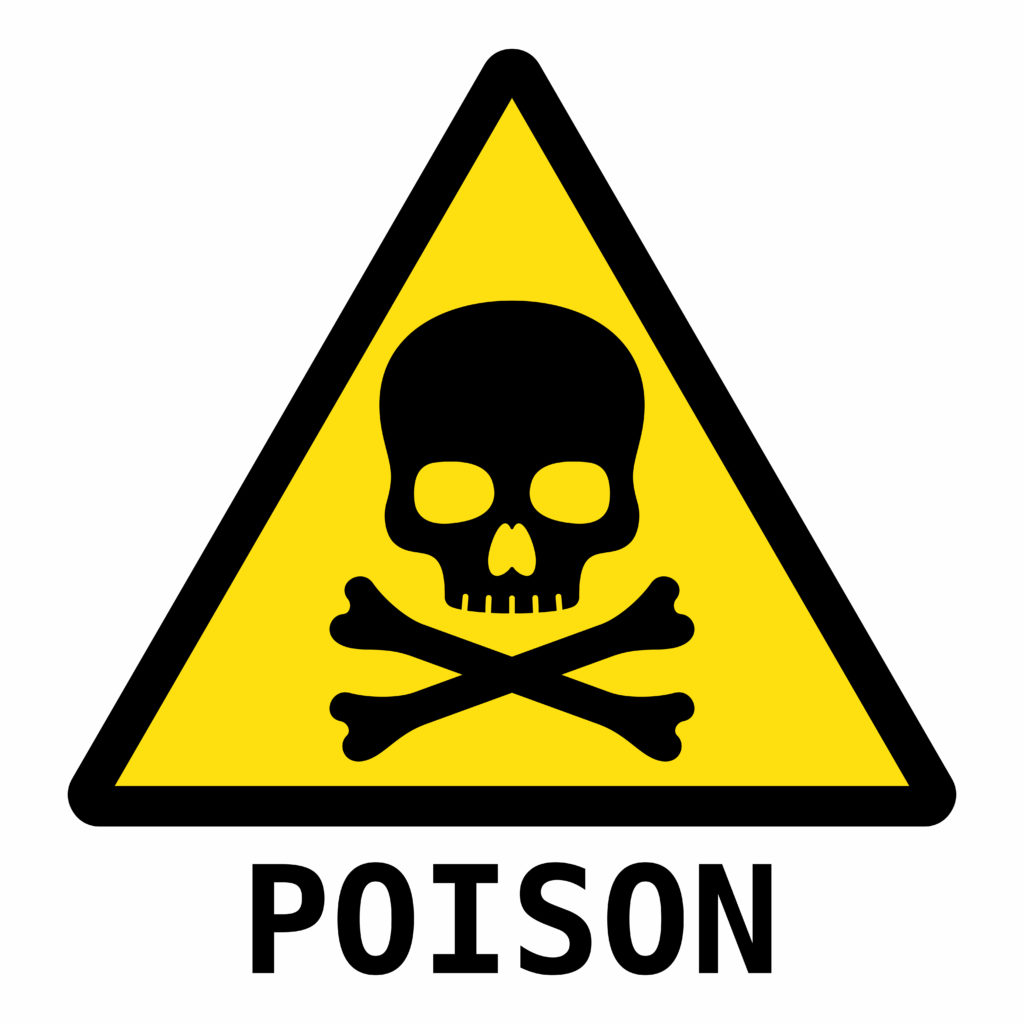A poison, which is also called a toxin, is defined as a substance which, if taken into the body in sufficient quantity, may cause temporary or permanent damage.
Poisons are not only swallowed or ingested, they are also absorbed through the skin, inhaled, splashed into the eyes, or injected into the body. Once the toxin is in the body, it can get into the bloodstream and be carried quickly to organs and tissues. The speed and way that a poison affects the person will vary depending on the person, type of poison, method of poisoning, the speed of intake and the amount of the intake.
Swallowed Poison
Swallowed poisons may harm the digestive tract or cause more widespread damage like burning, swelling and blistering. This is in addition to the damage they do as they enter the bloodstream and are transported to other parts of the body. These chemicals include many common household chemicals used in cleaning such as detergents and bleaches. Chemical poisons also include drugs. These can be in any form, whether prescription, over the counter or illegal drugs.
Signs and Symptoms
The signs and symptoms of poisoning will depend on the type of poison, but may include:
- Vomiting, sometimes bloodstained
- Nausea
- Diarrhoea
- Impaired consciousness
- Pain or burning sensation
- Empty containers in the vicinity
- The recent history of ingestion or exposure.
The treatment is first to identify what they have taken, ask them what has happened:
- Try to reassure them
- Call for an ambulance
- Give as much information as possible about the swallowed poison. This information will assist doctors to give appropriate treatment once the casualty reaches the hospital.
If the casualty becomes unconscious:
- Open the airway with the head tilt-chin lift and check for breathing
- Be prepared to give chest compressions and rescue breaths if necessary, but if the patient has been in contact with chemicals, use a face mask or shield to avoid getting the chemical in your mouth
- Place them into the recovery position if the casualty is unconscious but breathing normally
DO NOT induce vomiting as this can cause more damage. This is because the chemical will then recover the respiratory tract, mouth and nose.
For more information on training courses, visit our “Courses” page which also includes our First Responder and First Person on Scene (FPOS) Courses.

